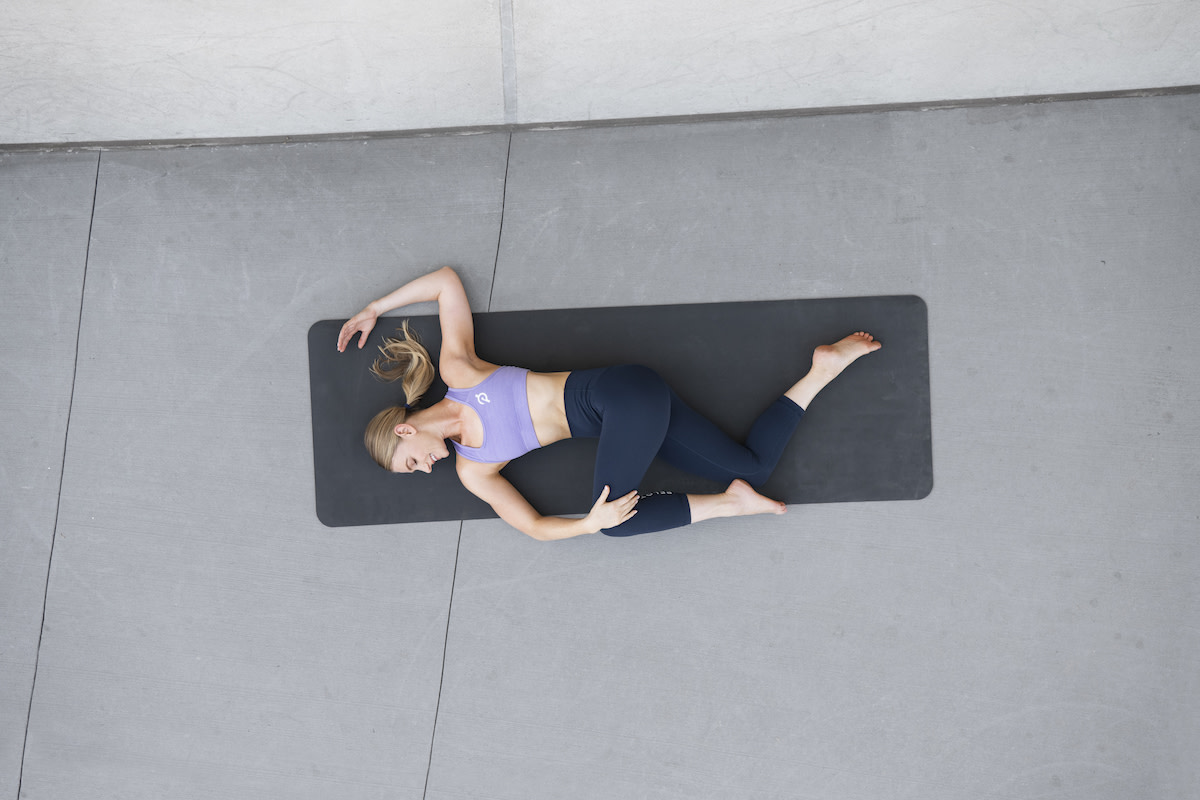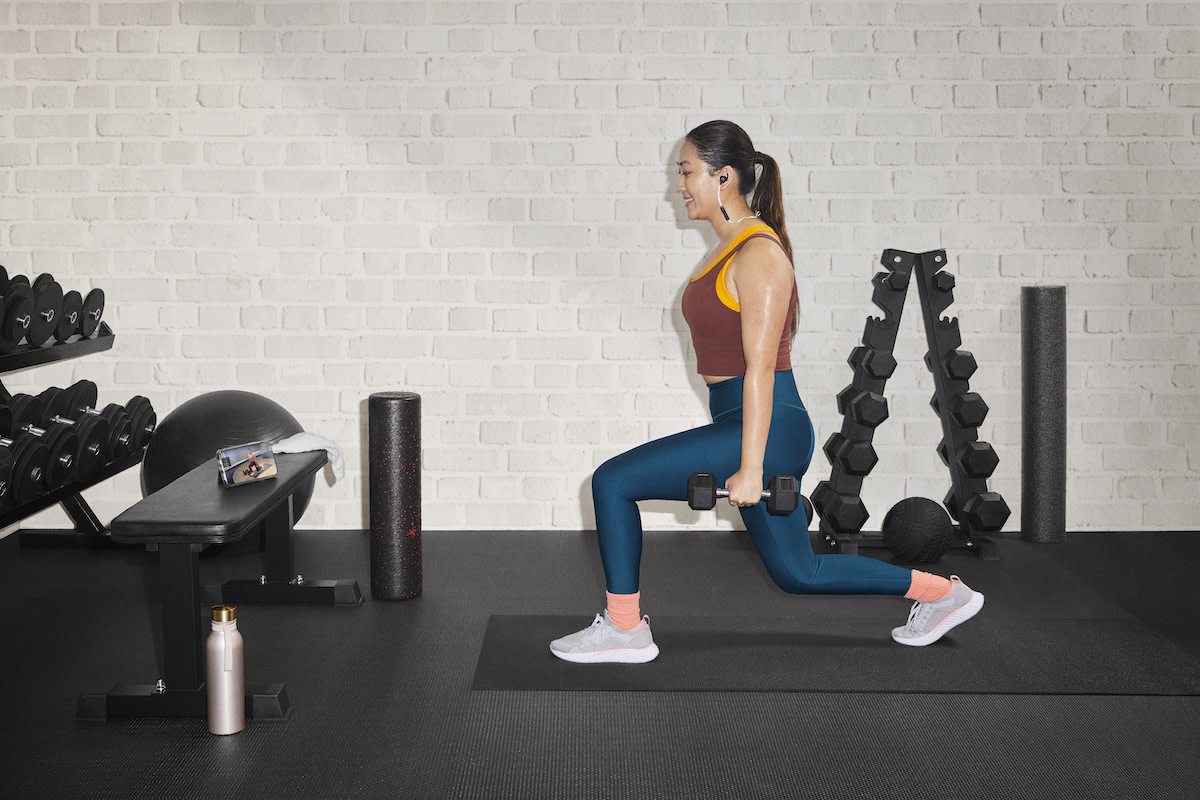
How To Get Back Into Working Out (No Matter How Long It’s Been)
Because it's never too late!
By Colleen Travers•
Getting Back Into Workouts After a Break
Workouts to Get Your Fitness Back on Track
More Tips for Getting Back Into Fitness
Falling off your fitness routine,whether from an injury or life just getting in the way, can be extremely frustrating. All that hard work you put in suddenly seems unattainable, and the idea of getting back into a groove can be daunting. Not to mention, once you do decide to start again, you may feel discouraged when workouts you previously would’ve crushed feel tough. And while all of these feelings are normal, they can discourage you from starting to exercise again. Here’s how to overcome these mental hurdles so you can stop fretting and start sweating.
Getting Back Into Workouts After a Break
Here are a handful of helpful tips to help you start exercising again and get back into a healthy routine.
1. When starting over, ignore the metrics.
One of the best ways to overcome your workout anxiety is to focus on yourself. “Comparing ourselves to others is a major source of anxiety for many individuals,” says Jameca Woody Falconer, PhD, a licensed clinical psychologist and Peloton Member based in Saint Louis, Missouri. “I remember the first month I had my Bike, feeling very intimidated about how well others were riding. It’s important to train yourself to ignore the metrics of your peers and focus on your own conditioning and personal goals.” The good news? Studies have shown that consistent exercise reduces feelings of anxiety, so the more you stick to your routine, the easier it will be to overcome those starting-over jitters.
2. Schedule your workout.

By setting a specific day and time for your workout, it helps ensure that fitness is a priority, and that you are committed to it. Scheduling your workout can help you overcome procrastination or other inclinations to cancel on yourself last-minute. Whether you prefer early morning sweat sessions, a lunchtime refresher or post-work wind downs, pencil in some time for your workout and make it a nonnegotiable part of your regular routine.
3. Shift your focus.
“It takes an enormous amount of focus to set up a time to begin a [workout] program, engage and continue to engage in that program,” says Dr. Falconer. This means resuming an activity that will be as easy as possible to stick to, taking into account what’s going on in your life at the present moment. This might mean changing your usual 45-minute rides to 20 minutes in order to squeeze them in or using the Peloton App for on-the-go workouts to stay in shape during a busy month of travel. “Don’t think about what you used to do,” she says, “focus on what you can do now.”
4. Switch up your self-talk.

The biggest hurdle in picking up a workout routine again isn’t overcoming the physical hurdles (sure, those aren’t fun but with time will get easier) – it’s getting a handle on the mental barriers. “Everyone has some type of self-talk consistently playing in their heads, but when that self-talk is negative, it begins to challenge our thinking and our positive behaviors,” says Dr. Falconer. Instead of thinking about how out of shape you may have become or how you barely have time to shower, let alone work out, embrace what you are doing to keep yourself accountable and healthy. “Changing a thought from, ‘I’m not fit enough to do this workout’ to ‘I showed up for this workout and I’m stronger for it,’ are crucial ways you’ll be able to maintain a routine again,” says Dr. Falconer. Bonus: If you need help shifting your thinking, an on-demand meditation session on the Peloton App is a great starting point to keep your headspace positive when it comes to your fitness, your goals and yourself.
5. Add rest and recovery days to your workout routine.
Including recovery days into your routine is just as important as the actual workout itself. When you exercise, you put stress on your muscles and bones, and rest days provide the time needed to repair and grow stronger. Without it, you risk overtraining and injury. Built-in rest periods can also help prevent burnout and keep you motivated in the long run.
Workouts to Get Your Fitness Back on Track
There are many different basic workouts that can help you get back in shape. You’ll want to be sure to work in some of these approaches:
1. Assess your fitness level with flexibility and mobility workouts.

This is a great place to start when coming back into a fitness routine. Workouts focused on flexibility and mobility can help identify areas to work on, while improving your overall ability to perform physically. This can improve the range of motion in your joints, relieve muscle tightness and promote a healthy posture—all of which can help reduce the risk of injury once you get back into the more challenging exercise routines.
Examples of flexibility and mobility exercises include dynamic stretching, foam rolling, and yoga. Dynamic stretches, in which you’re actively moving arms or legs, for example, help warm up your muscles and prepare them for activity. Foam-rolling is a form of self-massage that can help relieve muscle tightness in target areas. Yoga is ideal for optimizing both flexibility and mobility, especially since many yoga poses work multiple muscle groups and areas of the body all at once.
Beginning slow and steady, with an emphasis on flexibility and movement, helps lay the foundation for the rest of your fitness journey, so you’re setting yourself up for success.
2. Build your endurance with light cardio workouts.
When returning to workouts after an absence, it’s important to begin by gradually adding in light cardio workouts. This helps to ensure a smooth transition back into a fitness routine and avoid injury.
So, what do we mean by light cardio workouts? Well, any low-impact exercise that raises your heart rate is a good place to begin. A brisk walk outside or on the Peloton Tread, cycling on the Peloton Bike, or opting for the natural high-intensity, low-impact of the Peloton Row all work. The key is to start at a pace that is comfortable for you. You’ll want to gradually up the intensity as your fitness improves.
You may want to start with a 15- to 20-minute session, two or three times a week. You can gradually increase both the duration and frequency as your body adapts. Always listen to your body and adjust the workout, or your schedule, as needed. Be patient and kind to yourself as you work your way back up to your pre-break fitness level.
3. Rebuild your strength.

Use a combination of resistance and strength training to rebuild your strength after a workout drought. Start with exercises that use your bodyweight as resistance, such as pull-ups, squats and lunges. Make sure you progress slowly, noticing how your body does after the requisite rest days. Once you are able to comfortably do so, you can try exercises that use light weights and fewer reps. Then, as your strength improves, add on. Focus on compound movements that work multiple muscle groups at once—a fantastic way to build overall strength. Bench presses, deadlifts, and rowing are great examples of these.
More Tips for Getting Back Into Fitness
It may take time and effort, but you can hit your fitness goals, even after a workout hiatus. The key is to start gradually, set realistic goals, and stick to a consistent workout routine. As you progress, you can adjust your regimen so you continue to challenge yourself and improve.
We’ll close this article with answers to common questions about coming back to exercising after a break:
Q: How long will it take to get back to my former fitness level?
How long it takes will depend on many factors unique to you. How fit were you before you stopped working out? How long has it been since you’ve done any sort of regular exercise? Are you able to dedicate 2-3 hours per week toward fitness? Are you committed to getting healthy and fit?
It may take weeks or even months before you regain a level of strength and fitness that you’re happy with. The most important thing is to progress at a pace that is safe and sustainable for you. After all, fitness is a lifelong journey, not a one-and done accomplishment to be tucked away after you’ve reached your goal.
Q: How long does muscle memory last?
Muscle memory—aka muscle adaptation—can last for a long time, potentially even a lifetime. When you repeatedly perform specific movements, your muscles become more efficient at it. This makes it easier to regain strength and coordination after a fallow period. How long your muscle memory lasts will vary depending on each individual and the type of movement involved. In many cases, it can persist for months and even years after a period of inactivity. So, whether your activity of choice was cycling, rowing, or lifting weights, the more you did it before taking a break, the more able your body will be able to efficiently perform the same moves when you get back on track.
Q: Once I’m back on track, is it OK to take a break from working out for a week?
Taking a break is a great way to rest muscles, avoid burnout and reassess how well your fitness routine is working for you. If the break is a one-off, and you need a week without exercise due to other commitments, no problem! If you take a break for too long, however, you may start to lose the progress you’ve made to date and it may take longer to ultimately reach your fitness goals.
If you know you’ll be unable to work out properly for a week, that doesn’t mean there isn’t a way to remain active in the interim. Taking the stairs instead of the elevator, really getting into housework or gardening, and enjoying a few stretches in the morning or at night are sneaky ways to still be active when you can’t enjoy the benefits of an entire workout.
No matter what condition you’re currently in, there is a workout style and pace that can help you get back on the fitness track. Try the Peloton App for free to gain access to a variety of workouts led by expert instructors in each area.
This content is for informational and educational purposes only and does not constitute individualized advice. It is not intended to replace professional medical evaluation, diagnosis, or treatment. Seek the advice of your physician for questions you may have regarding your health or a medical condition. If you are having a medical emergency, call your physician or 911 immediately.
Level up your inbox.
Subscribe for a weekly dose of fitness, plus the latest promos, launches, and events.
By providing your email address, you agree to receive marketing communications from Peloton.
For more about how we use your information, see our Privacy Policy.